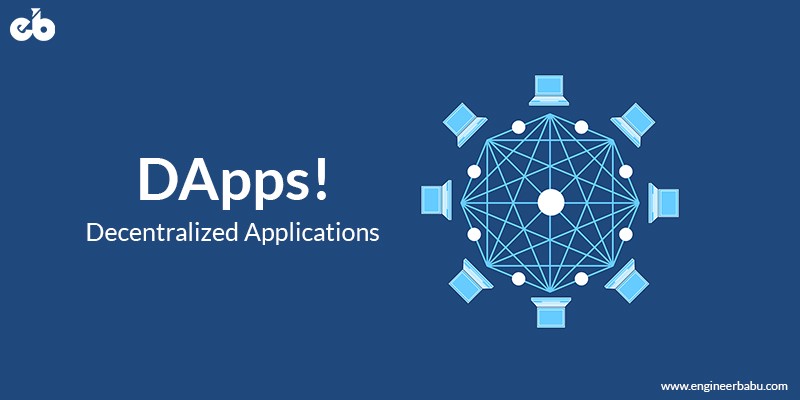Decentralized applications (DApps) are apps operated on a model considerably different from the client-server model of traditional apps. Unlike traditional apps, decentralized apps do not require the presence of any central control system for their management or maintenance. Instead, the apps are based on a model involving a network of computers which work together and contribute equally in maintaining the network.
While the computers involved in the model are termed “nodes”, it’s notable that each of the nodes keeps a record of transactions taking place within the network.
Essentially, the blockchain principle plays a major role in the functioning of decentralized applications. While blockchain is a dominant technology in today’s cryptocurrency world, it’s interesting that there are various blockchains on which DApps can be built. Interesting also is the fact that some decentralized apps (precisely Bitcoin and other Type 1 DApps) maintain self-developed blockchains.
What Are the Features of Decentralized Applications?

Decentralized applications are known for a host of exciting features which generously distinguish them from traditional applications. Notable list among these features include:
Open source: this is a descriptive term indicating that the code of a particular decentralized app can be accessed by anyone
Blockchain: this refers to the set of cryptographic data held on a blockchain
Decentralization: this is a term indicating that DApps are not under the control of any central authority
Algorithm/Protocol: since network participants in a DApp are meant to be rewarded, a protocol/algorithm helps generate the tokens which ultimately serve as rewards to the participants
Tokens: these refer to the incentives (precisely in the form of crypto tokens) that network participants (who could be miners or users) receive
The Reward System of DApps
Decentralized apps are basically known for a bipartite reward system which combines the Proof of Work (PoW) model and the Proof of Stake (PoS) model.
To better illustrate how the PoW reward model works, we may cite how crypto miners get rewarded differently depending on the amount of transactions processed. Put simply, crypto miners earn tokens based on how many transactions they have processed. Similarly, network participants under the PoW model are rewarded in line with the amount of effort they contribute to the network.
As regards the PoS model, the participants in a DApps network get rewarded with voting rights depending on their stakes. This, broadly, is to say that the network participants are stakeholders and depending on his amount of stake, every network participant holds the right to vote on a new block.
Pros of Decentralized Applications
- A single attack, failure or outage isn’t enough to keep a decentralized app out of operation
- DApps provide better security compared to client/server networks
- DApps are devoid of downtime
- Payments can be conveniently executed on DApps
- To incorporate any change into written blocks of a DApp network, there must be a unanimous agreement between the network’s participants, hence fostering trust
- Decentralized apps do not have central control authorities
Cons of Decentralized Applications
- Decentralized applications are associated with high energy costs
- The more DApps expand, blockchains tend to decline in efficiency
- Some DApps are associated with delayed transaction processing times
Conclusion
Hopefully, reading this post has opened your eyes to a lot of information about DApps. Also, you must have been exposed to what distinguishes DApps from traditional apps. Notably, DApps are much greater than traditional apps particularly as they are useful for purposes that demand optimum data trust.
This, obviously, is one of the reasons why it could cost you a great deal of bucks to build a high-profile DApp. Nevertheless, you can expect to spend fewer bucks if you’re building a basic DApp.





